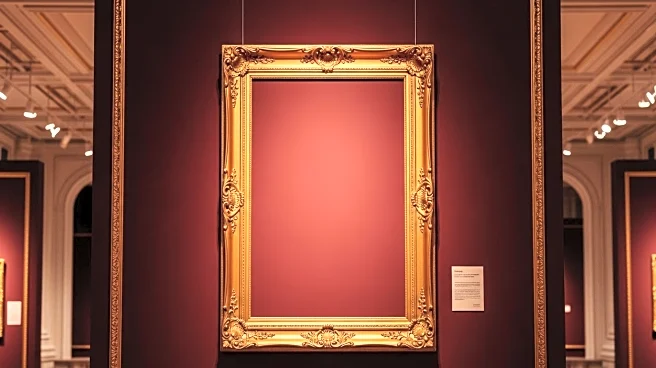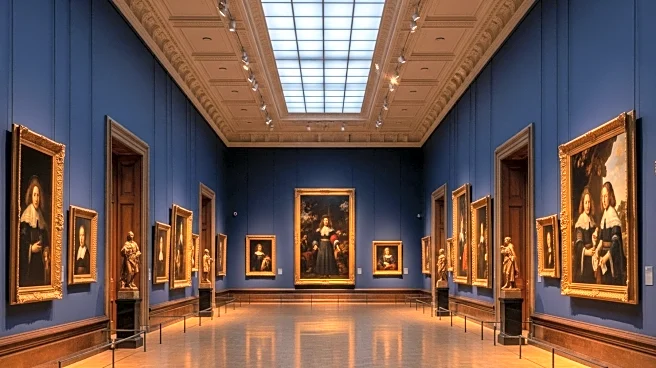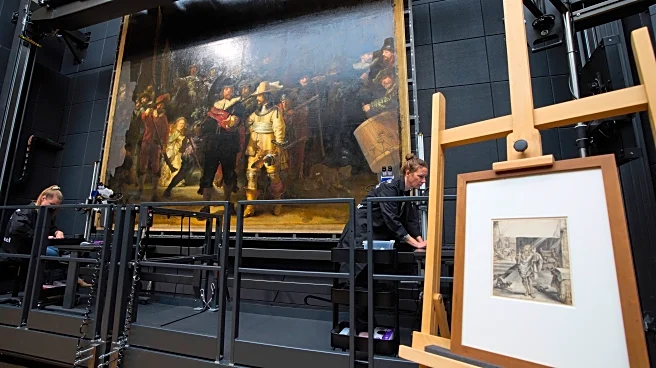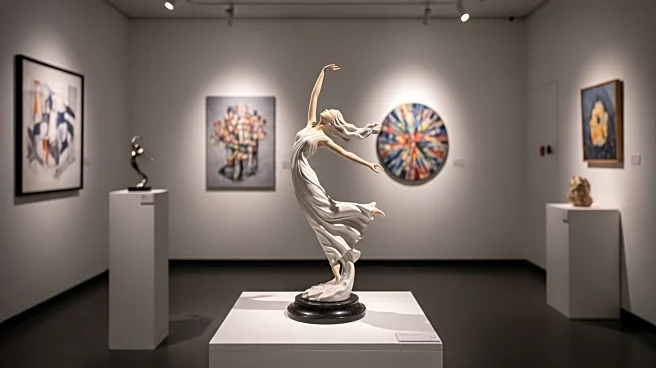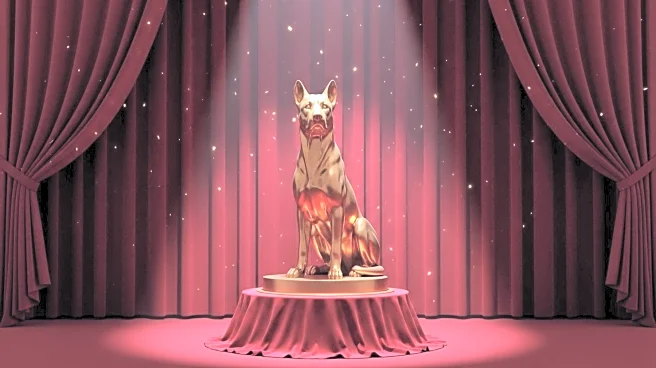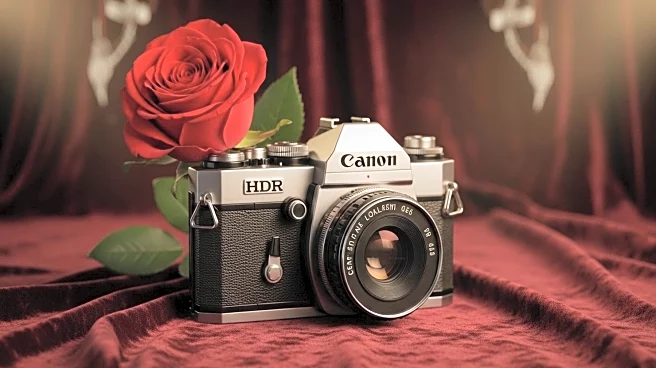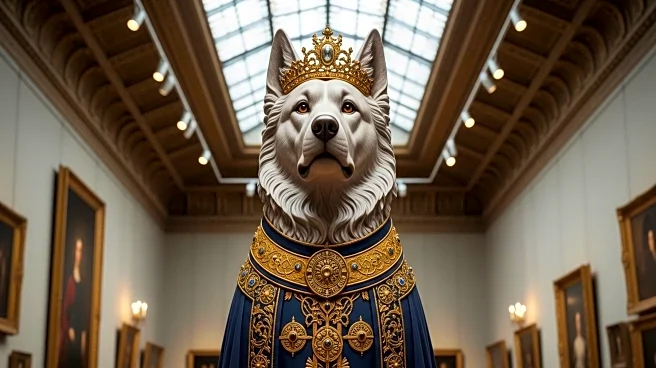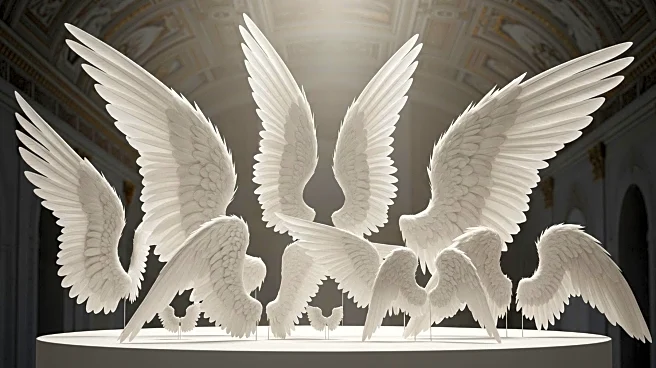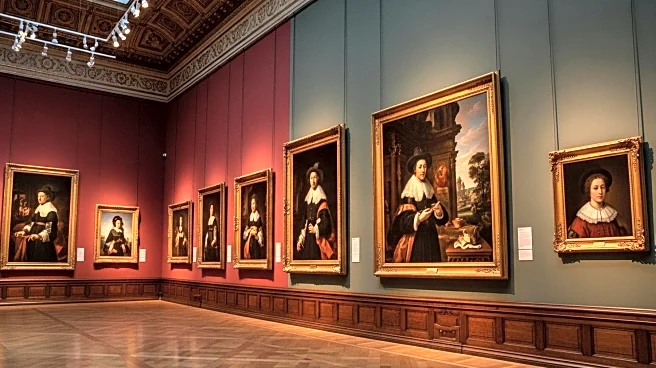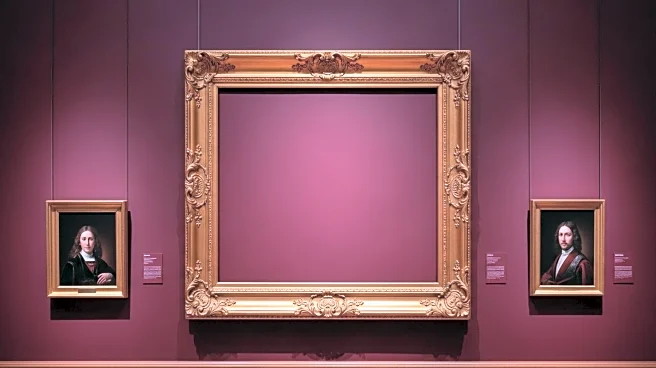What is the story about?
What's Happening?
The Palazzo Strozzi in Florence is preparing to host a significant exhibition dedicated to the Renaissance painter Fra Angelico. The exhibition, set to open on Friday and run through January 25, will feature over 140 works from various lenders, including panels from altarpieces dismantled during Napoleon's suppression of Italy's convents. The exhibition aims to highlight Fra Angelico's contributions to Renaissance art, showcasing new scholarly material and insights about his works. The exhibition's chief curator, Carl Brandon Strehlke, emphasized that the event is designed to enhance public appreciation of Fra Angelico's extensive artistic output.
Why It's Important?
This exhibition is crucial for reinforcing Fra Angelico's status as a prominent figure in Renaissance art. By bringing together a vast collection of his works, the exhibition provides an opportunity for both scholars and the general public to gain a deeper understanding of his artistic legacy. The event also underscores the importance of preserving and studying historical art pieces, which have been dispersed globally due to historical events like Napoleon's suppression of convents. The exhibition could influence future art historical research and public interest in Renaissance art, potentially leading to increased tourism and cultural engagement in Florence.
What's Next?
Following the exhibition's opening, art historians and enthusiasts are likely to engage in discussions and analyses of Fra Angelico's works, potentially leading to new interpretations and scholarly publications. The exhibition may also inspire other institutions to organize similar events, further promoting Renaissance art. Additionally, the influx of visitors to Florence for the exhibition could have positive economic impacts on the local community, including increased business for hotels, restaurants, and other cultural sites.
Beyond the Headlines
The exhibition highlights the ethical considerations involved in the collection and display of historical art pieces, particularly those that have been displaced due to political upheavals. It raises questions about the ownership and stewardship of cultural heritage, encouraging dialogue on how best to preserve and share these works with the public. The event also reflects broader cultural trends in valuing and revisiting historical art, which can foster a deeper appreciation for the artistic achievements of past eras.
AI Generated Content
Do you find this article useful?
